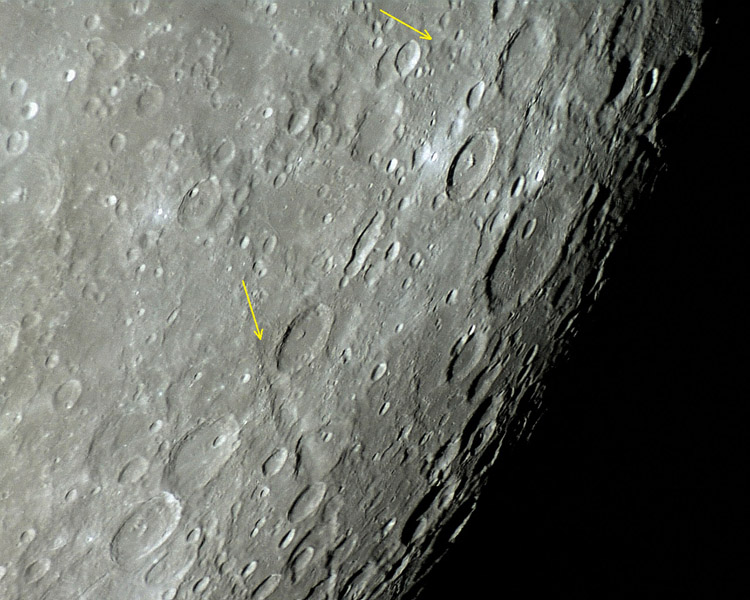Difference between revisions of "June 13, 2013"
(Created page with "__NOTOC__ =Why So Few Bsv?= <!-- ws:start:WikiTextHeadingRule:0:<h1> --> <!-- ws:start:WikiTextLocalImageRule:6:<img src="/file/view/LPOD-Jun13-13.jpg/4378507...") |
(No difference)
|
Revision as of 18:34, 1 January 2015
Why So Few Bsv?

single frame image by Ricardo Jose Vaz Tolentino, Belo Horizonte, MG, Brazil
Basin ejecta come in many varieties, with the somewhat rare basin secondary chains being best represented on the nearside by the Rheita and Snellius valleys. As Ricardo wrote: the valleys consist of a segment or chain of secondary craters superimposed very close, which were created by large debris ejected by the colossal impact that created the huge Nectaris basin. The craters that make up the pathway of the valley suffered damage caused by subsequent impacts. Both of these basin secondary valleys (BSV) are older and more battered than the pristine ones northwest of Orientale. Although both of these Nectarian valleys were formed at the same time, the northern one, the Snellius Valley, looks older and is harder to see, but part of that may be due to its general east-west orientation so that it isn't defined well by shadows. Nectaris, like the smaller Schrödinger Basin, has only two massive BSV, and most basins other than Orientale have none. Imbrium my have formed BSV but much of its surroundings is covered by subsequent lavas, so valley chains may be hidden. Why are BSV uncommon? Presumably their formation required ejection of small mountains of debris rather than fractured smaller masses. Perhaps this only happens where parts of the impact target area are relatively consolidated. At Orientale, the BSV tend to be at right angles to the inferred direction of impact, according to models of its formation from an oblique impact. Stresses in the target rocks might be weaker on the sides rather than in the direction of projectile movement.
Chuck Wood
Technical Details
04/08/2012, 02:08:30 LT (05:08:30 UT). Reflector Dobsoniano SkyWatcher Collapsible Truss-Tube + Orion StarShoot Solar System Color Imager III + Celestron Ultima 2X Barlow.
Related Links
Rükl plates 68 & 69
21st Century Atlas charts 4 & 5.
COMMENTS?
Click on this icon File:PostIcon.jpg at the upper right to post a comment.



